Welcome back to our many-parted consideration of the ant-like path to wealth, outlined for us in Proverbs 6:6-8:
“Go to the ant, O sluggard; consider her ways, and be wise.
Without having any chief, officer, or ruler,
she prepares her bread in summer
and gathers her food in harvest.”
Thus far we’ve covered what it means to work while it’s summer (but not give that work an undue place in your heart), save for the future and invest at least a portion of your earnings in long-term assets that will grow while you continue gathering more resources. Today we’re going to quickly cover a few tips on where to hold the stocks and bonds that are growing for you while you’re out earning and working. This will be a little more technical instruction on investing. If you’re not that versed and want a primer, read on. If this level of specificity will make you swoon, then ditch this discussion and, uh… I don’t know… go here and enjoy some music.
What follows might be the types of things you’ve heard about in the “welcome to our company” talk given by HR on the first day of a new job (your eyes were also rolling back in your head on that day. “I’ll NEVER EVER EVER read the handbook,” you thought to yourself), or perchance from your grandpa, who thought you should have spent your earnings investing in a Roth IRA instead of frittering it away on that new faux masculine truck with the wheel wells that look riveted on (he was right BTW; that early earnings money is like gold, and you set it on fire, man. That truck could’ve been $100k, easy). Whether or not the terms below are familiar to you, we’ll touch on all the basic vehicles that you can use to start investing for the future! We’ll cover non-exciting but really helpful stuff like:
Taxable or Tax-Deferred Investing?
The first fork in the road when it comes to choosing where you’ll invest in stocks and bonds is deciding whether you’ll use a taxable or tax-deferred account. That simply means, will you pay taxes while the money is in the investment account, or will you wait until you pull it out of the investment account to pay taxes (because my hombre, you most certainly will pay taxes on it, one way or another).
To illustrate what happens to taxable and tax-deferred dough, let’s say you’re looking at a stock that costs $100, pays a $2 annual dividend (did you know that some stocks pay you a little extra just for owning them? Yep, that’s called a dividend. Tis nice! And you can use that dividend to buy more of the investment, if you’d like), and let’s say it grows by 10% each year, just to make the math easier.
If you hold that stock in a taxable account for one year, the earnings will look like this:
$100 initial investment; $2 annual dividend; $10 investment growth.
- Now that $2 dividend, while delightful, WILL be taxed. You’ll pay Uncle Sam on April 15 on that $2, like it or not.
- If you sell that stock after a year and buy another one, you’ll have to pay taxes on the $10 growth. That growth (on an investment that makes money) is called capital gains–and the IRS is forever happy for you to make money on your investments, because it’ll take its cut.
- (If you were to lose money on a stock in this account, and sell the stock at a loss, you could actually use that loss to offset gains from other stocks that you sold for a profit. Like “I lost money here, so even though I made money over there, I didn’t make THAT much, because look at what I lost over here…” and you pay less tax for the overall gain. So that’s nice.)
- In this taxable account, you WON’T pay any taxes on capital gains if you don’t sell the stock. So if that $100 stock is worth $500 after a few years, you don’t owe anything until you sell.
- If you paid, say, a 20% tax on that dividend, at the end of year one, here’s your investment:
$100 initial investment
+$1.60 dividend left over after taxes
+$10 growth
$111.60 to go into year 2 investment
So that’s a taxable investment account.
There are great reasons and uses for taxable investment accounts SUCH AS!
- Taxable accounts are good for money that you might need prior to retirement age.
- They’re also good for assets that produce relatively little annual income (like dividends), because then you can be strategic about when you’d like to sell off your investments, knowing you’ll be taxed at that time.
- These accounts can also be used to great effect for generosity efforts (hooray for those!), and in a future article we’ll cover some tips on how to use money that’s grown inside investment accounts (“appreciated assets”) to both fund your giving goals and avoid taxes!
In a tax-deferred account, you don’t have to worry about paying taxes on gains and losses inside of the account. You can buy and sell at will, and receive dividends, and none of the money will be taxed – so long as it stays inside the account.
Sounds like a better deal, huh? …but there are limitations on these accounts:
- First, they will often carry steep penalties if you do take any money out before reaching retirement age.
- Second, some of them have the added benefit of allowing you to put money in before paying taxes on that money, BUT charge you with taxes at the end, when you finally pull that money out, at your current income tax rate. So this can be better or worse for you, depending on what your tax rate is now vs. what it’ll be when you retire and start using that money. The amount of taxes taken out when you retire might be much higher than if you’d just paid capital gains taxes in a taxable account. *sigh* decisions. (This is why professional advice can be so valuable.)
- For instance, if you’re in a low tax bracket now, but make a lot of money over your working life and are great at socking it away, so that you retire much more wealthy than you were during your working life, you’ll be at a higher tax bracket when that money starts coming out of the account. In that case, you’d have been wiser to pay the taxes up front, while you were in a lower tax bracket. Because if you’ve waited to pay taxes until you pulled that money out, and your tax bracket is higher then… well… the government will come knocking for their taxes.
So that same money in a tax deferred account would look like this:
$100 initial investment
+$2 dividend (not taxed for now)
+$10 growth
$112 to go into year 2 investment (which will be taxed when it comes out)
The Many Faces of Tax-Deferred Accounts
While taxable accounts are rather one-dimensional, there are myriad varieties of tax-deferred accounts, and they each have their own rules and uses. So let’s look at a few of the most common accounts that you may be able to use in your own wealth-building efforts. SHALL WE!?!?
401(k) and 403(b) Plans
You’ve probably heard of 401(k) plans, and you may or may not be familiar with their non-profit cousin, the 403(b). These two account types are functionally very similar: Employers sponsor these plans in order to allow employees to save pre-tax money (it comes right out of your paycheck, before any taxes are paid) into an investment account for retirement.
Because the money goes in before being subject to income tax, employees often can save more than they would be able to save on an after-tax basis. In many cases, employers also match a portion of employee contributions in these accounts. If you find yourself in a job where your employer is offering to match contributions – for example, the first 4% of your salary – you should move heaven and earth to make sure that you’ve elected to defer AT LEAST the amount of your salary into the plan that results in your receipt of the full matching amount. It’s like an immediate 100% return on your investment! (But you’re already doing this. Right? Tell me you’re doing this, if it’s offered to you. If an employer ever says “matching” w/re: investment accounts, YOU SAY YES.)
In a 401(k) plan, you won’t have access to the money you invest until you are 59½ years old, or at least 55 and no longer working for the employer with whom the plan was created. At that point, you can take out whatever you like, and you’ll be taxed on your withdrawals as if they were ordinary income.
If you leave the money alone until you turn 72, the government will force you to begin distributing the money to yourself (they want some of the tax dollars that they’ve let you avoid paying all these years).
If you need access to your money before you hit retirement age, you’ll pay taxes on the earnings, PLUS a 10% penalty for not leaving it in there as long as the plan was designed to hold it. Oof. This almost always kills the benefits of tax-deferral, so don’t put money in this type of account if you might need it soon. Said another way, if you have dough in a 401(k) or 403(b) account, just make a vow that you’ll never touch it until you’re in retirement.
Lastly, 401(k) (and most 403(b)) plans allow you to take out loans and pay yourself back with interest. These can be useful as a last-resort option if your only other choice is to distribute funds and pay a penalty. Of course, when you take a loan out of a retirement account like this, you remove assets that are growing tax-deferred, which will often have an outsized negative impact on your account’s future value. That’s pretty inside baseball kind of stuff there, but hey, now you know.
Individual Retirement Accounts (IRAs)
You’ve probably heard of an IRA. These are also tax-deferred accounts that come in two main stripes. A traditional IRA allows you to put in money tax-free and pay taxes when you make withdrawals (just like the 401(k) we described above). A Roth IRA allows you to put in money that you’ve already paid taxes on, but once that money goes into the account it can grow tax free and you owe no taxes when you withdraw funds. Pretty sweet deal huh?
The general wisdom is to contribute to a traditional IRA if you think your tax rate today is higher than it will be when you’re in retirement. So if you earn $350k annually today, your 32% tax rate may be far higher than when you’re retired and only making $100k of annual distributions, placing you down in the 22% bracket. Conversely, if you’re just starting out and in a lower tax bracket, contribute to a Roth now and you avoid paying high tax rates later when you, like the Abrahamic dude that you’re becoming, are stewarding vast wealth later in life. This decision is somewhat enforced by a $193k income limit for those who make Roth contributions, although there are several loopholes that make it possible to contribute to a Roth regardless of your income. Lastly, some 401(k) plans allow you to make your portion of the contributions as Roth contributions – meaning that you’ll get taxed on your salary deferrals but withdraw them tax free later on. (Consult a professional when you get over your head.)
Individual retirement accounts have added benefits of being more flexible when it comes to withdrawals. Did you know that you can use your IRA to fund education goals for yourself or your children later in life? If you’re married, you can also pull out $20k for the purchase of your first home without penalty. And if you’re injured in a freak whaling accident, you can use your IRA to pay for harpoon removal surgery, so long as your (frankly, irresponsible) employer doesn’t reimburse you for those medical expenses. Yes, for the most part, IRA accounts are similar to 401(k) accounts but with a touch more flexibility. Nice!
Other Tax-Deferred Accounts
This article could continue nearly forever (despite your feelings right now, you’ve only been reading for about 9 minutes) if we tried to cover every type of tax advantaged account. But for the sake of completeness, let’s just nod to some of the important other types of tax-deferred accounts:
The Health Savings Account: “Ummm… isn’t this thing for health expenses?” Not so fast Cowboy. I’ve said this before but I’ll say it again: the HSA is the ONLY account that Uncle Sam allows you to fund with pre-tax dollars (like a traditional IRA, if you remember when we talked about those) and then allows you to spend from without paying taxes (like a Roth). If you want to know how to pull that off, even for non-medical expenses, go read the fantastic, informative, inspiring article I wrote on exactly that topic.
The 529 Plan: This is an educational savings program. If you’re hoping I’ll tell you that you can also use a 529 plan to fund your retirement… keep hoping. While these suckers can make fantastic multigenerational assets for buying your grandchildren some learnin’, they are only to be used for tax-deferred savings towards qualified educational spending.
The 457 Plan, AKA “Deferred Compensation”: This one is a bird of a different feather: With a deferred comp plan, your employer agrees to hold off on paying you some of your earnings, which they invest instead of paying it to you. You don’t have to pay taxes on the money, because you never got the money! The employer also doesn’t get to deduct the money like they can their regular payroll. Why is that you ask? Because the money is still subject to the creditors of your employer. That means that if you have a million bucks of deferred compensation (oh baby!) and then, right before you elect to receive that money, your company goes belly up, you’re out of luck: Your would-be dough will be handed over to the lawyers who’ll dismantle your erstwhile employers and you’ll never see it. With other retirement plans, like a 401k or pension plan, the funds are NOT subject to the employer’s creditors and you’re safe even if they do go bust-o.
The Defined Benefit Pension Plan: Know any railroad employees or centenarians? They probably relied on a defined benefit pension plan, which guaranteed a certain amount of income in retirement based, usually, on years of service with an employer. Because the output, and not the input, is guaranteed by the employer, it’s the employer who bears the risk for this plan. That’s why most defined benefit plans have gone the way of the dodo. They are super rare these days.
The Defined Contribution Pension Plan: The defined contribution is a pension plan where the employer contributes a set amount of money based on age or years of service. That money is then invested and produces a benefit at retirement for employees. Because the input is the thing that is guaranteed in this type of account, the employer doesn’t bear the risk if their investments underperform expectations – that unfortunate outcome would just mean that the employee gets less monthly income in retirement.
Permanent Life Insurance: Tis true – you can use this vehicle to grow money on a tax deferred basis. For most of you, it’s a daggum inefficient way to achieve your goals, but I’ve already told you that when we covered permanent insurance. At length. Some would say ad nauseum. (If that’s you, then I would use one of my mother’s famous car driving tell-offs when someone blows their car horn at her: “Ah… blow your nose! You’ll get more out of it!”)
Qualified Annuities: An annuity allows you to pay a sum of money, either in one lump or over time, into a vehicle where it can grow (in this case, tax-deferred) until you “annuitize” the fund. At that magic moment, you’ll be promised a fixed amount of income for life (or for a set period of time). There are as many types of annuities as there are Jelly Belly flavors (endless, right? How do they keep innovating in that space??), so we won’t try to cover them all today. (Or ever.) In general, I feel similarly about annuities and permanent insurance: you can usually achieve the same investing outcome by investing directly in the securities that underlie these vehicles without the added costs. Having said that, there is a time and a place for almost everything… including annuities. Consult a professional.
Picking through the details and rules of each of the above vehicles might seem to many of you like less fun certain semi-annual medical evaluations <<turns head and coughs>>. Thankfully, your “boys downstairs” needn’t worry about being rougly handled with latex-gloved hands, because your peeps here at The Wallet live for such minutia. We could write a whole article on each of the above topics, but if we did you’d probably leave us for some shiny-headed guy who might tell you that God’s plan for your family’s wealth is all about having a nice boat. Yuck. (I mean, boats can be fantastic, but you can do so much better than that when it comes to the REASON for wealth. And what to do with it.)
Instead of that dreary outcome, let’s turn to something WAY happier…
WHO’S READY TO WRAP THIS SERIES??
I mean, it’s been a real dandy, but sometimes my digital ink well runs dry. So let’s sum up, along with some wonderful links so you can review at your leisure. So here’s how you can Build Wealth Like An Ant!
- Work while it’s summer – jobs are a great way to produce resources, whether you need to earn a salary for 40 years to provide for your family or a much shorter time to fund your next productive venture. (Work has a whole bunch of other God-honoring redemptive qualities, too, but that’s another article.) Stay on your guard against the dangers of jobs that want your worship, but don’t fear a job. They’s good.
- Store up resources – TIME is the number one most important variable when it comes to the accumulation of wealth. You can get most of the principles of investing wrong, but if you start early enough, you’ll probably do well. This is just as true of family business building as it is of investing in stocks. Don’t go for the quick win or instant success. On that note:
- Invest those resources for the long haul – don’t shy away from investment vehicles that can grow your wealth while you’re doing other things- seek them out! While we love entrepreneurship and real estate plays, we think good old stocks and bonds have an important place in almost every family’s financial picture.
- Hold those investments in the right place – lastly we wrapped up by saying that you have many options for holding your investments in places where the tax man won’t give them a haircut each year. Take advantage of these accounts!
Gents, we here at AW bless you as you build your outposts for long-term stability and influence, and pray these tips put you in good stead to continue that lifelong construction project. And if/when you ever need specific help in putting these strategies in play, find a professional. A good one.
*Mark Parrett is one of the founders of Abraham’s Wallet. When not blogging for you here, he’s raising a family in Salt Lake City, UT and working as a financial planner at Outpost Advisors.






